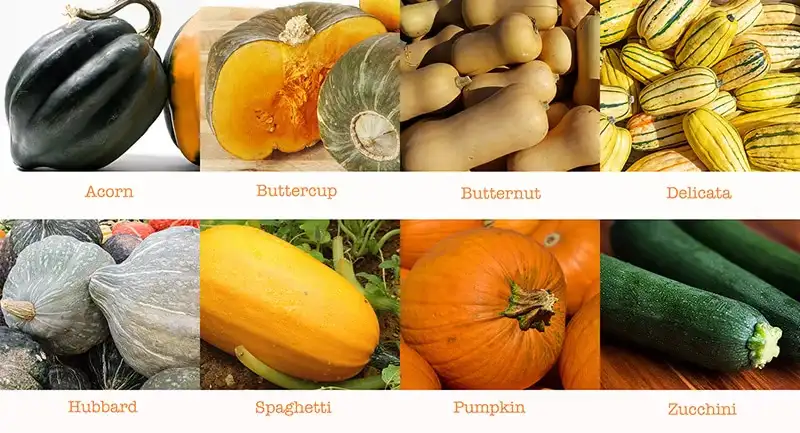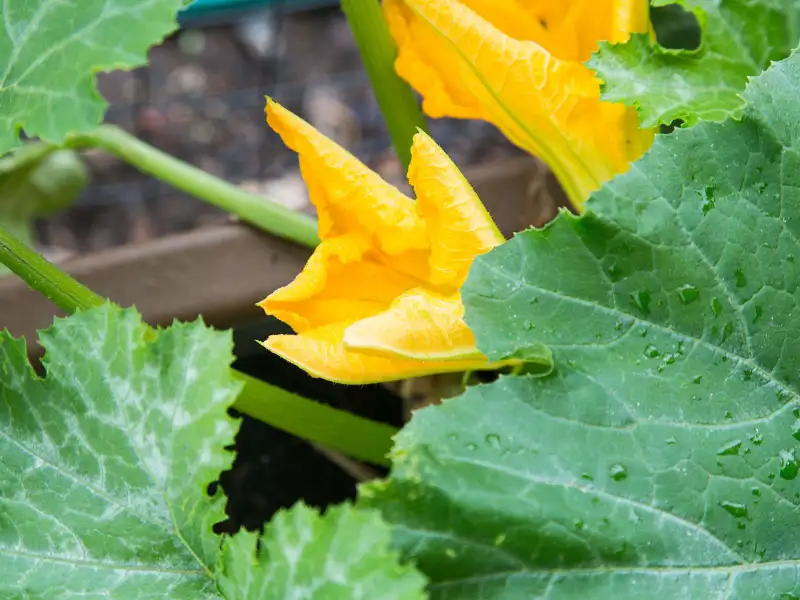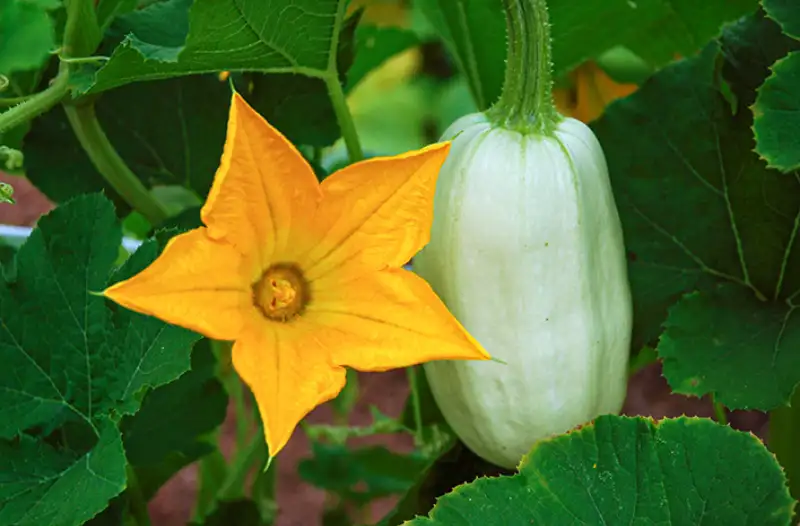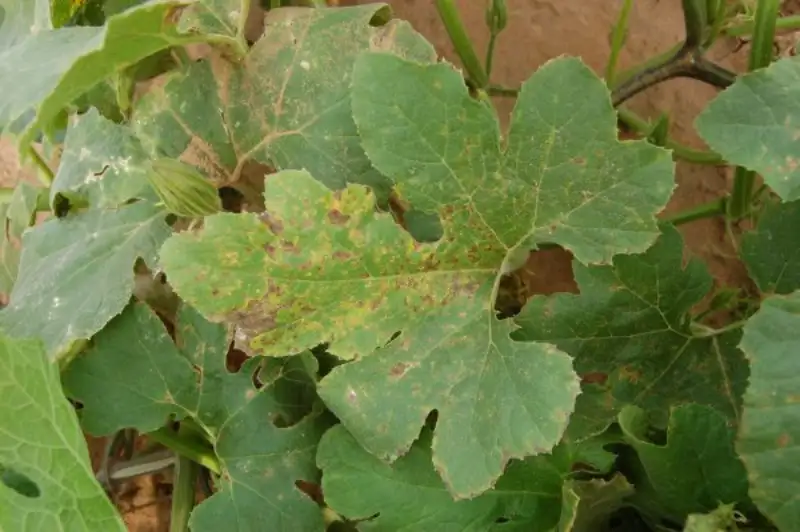You’re finally somewhere where you’ll get all your answers related to squash plants. We are as passionate as you about squash plants! We will tell you what you need to know about squash plants. Even the tricks to squash plant identification!
Whether you’re a beginner or a seasoned green thumb, we are here to add value. We at AsterGardening have years of experience in growing and cultivating squash plants.
Now you won’t have to look elsewhere to find how to grow, care and cultivate these delicious fruits. When you read this guide, you’ll be able to identify squash plants with your eyes closed!
Let’s dive in and explore this renowned fruit loved worldwide together!

Different Varieties of Squash Plants

Buttercup squash, butternut squash, acorn. No, these aren’t the names of some fan-fiction characters. These are a few of the several species of squash plants out there.
Squash is widely grown and has more than 30 varieties! Squash has further developed for different characteristics of the plant. YES! They are LOVED SO MUCH.
But you don’t have to worry about memorizing every one of those varieties. We will show you the primary squash plants you need to know.
DO YOU KNOW? The varieties of squash are two main categories. These two are Winter Squash and Summer Squash. Simply, the MAIN difference is their harvest time, as the names suggest. There are OTHER DIFFERENCES.
Winter squash has thick skin, while the summer kind has thin skin. Regardless, they are both squashes. The squash plant is a different plant species within the genus Cucurbita. Here are some other cucurbits:
- Spaghetti Squash
- Pepo Squash
- Butternut Squash
- Hubbard Squash
- Pepo Atlantic
- Maxima Squash
- Moschata Squash
- Necked Squash
- Banana squash
- Pumpkin (Yes, the pumpkin is a squash!)
Importance of Identifying Squash in the Garden

It would be best if you were good at identifying squash plants for many reasons. To become THE BEST SQUASH GROWER, you should know how to nurture your young plants.
Summer squash and winter squash have different requirements. Some enjoy MORE sunlight, and some require LESS WATER. Even their fertilization needs differ with the season. Understanding which kind of squash you want to grow will help you meet these needs.
MAKE SURE that you keep a lookout for pests and diseases. You DON’T want your HARD WORK to go in vain because of some NASTY BUGS!
Want to know your squash? Well, you MUST KNOW about the different stages of the plant’s life, like:
- The time for harvesting the ripe fruit
- Identifying the immature and mature fruits
- Knowing how to proceed when it becomes a mature plant.
You can’t know ALL OF THESE unless you KNOW and can identify squash plants.
Suggested reading: Growing Squash In Containers Made Easy
How to Make Squash Plant Identification By Leaves?
Don’t be BAFFLED by the heading! Squash plant identification by leaf sounds like a job for a SUPERHUMAN. Well, it’s not. Anyone can become great at identifying squash plants by leaves.
For starters, squash plants have HUGE LEAVES (think elephant ears!), which can vary in size and color. You identify the squash plants by leaves by observing specific characteristics.
Shape
Squash leaves can be either lobed or unlobed. Deeply lobed leaves have a particular form of ‘fingers’ or indentations on their edges. However, unlobed squash plants have leaves that are uniform in shape.
The differences in leaf shapes help you identify the type of plant. Feel a step CLOSER to knowing your SQUASH already, right?
Example: The Halloween pumpkin plant has lobed leaves. The LONG zucchini plant has unlobed leaves.
Size
Squash leaves vary in size, but generally, the plant has huge leaves that can be several feet wide. (Bigfoot? Talk about BIG LEAVES!) The size yet is critical in identifying the specific type of squash. Some have a small leaf, so you better look out for those.
Example: The butternut squash plant has smaller leaves than a spaghetti squash plant.
Color
You’d think this is a topic where the answer would be ‘GREEN! Well, true, but there are certain variations that you have to look out for. They are dark green. Some varieties have lighter green leaves or even a yellow or purple hue (I didn’t see this coming, did you?)
Example: The leaves of a yellow squash plant are typically light green. In contrast, that of zucchini is green.

Venation
Let’s dive down into specifics, shall we? Veins in the leaves of some plants are more pronounced than others.
Example: The leaves of an acorn squash have a unique pattern, and the veins are more prominent than others.
Hairs
The leaves can be either smooth or hairy. This can help you identify the plant as well.
Example: Leaves of butternut squash are typically hairy. While spaghetti squash has smooth leaves
Variations
So you’ll have to look at various traits. Despite knowing a particular characteristic
Example: Zucchini and a cucumber plant can be very similar in shape and color.
So check out their fruit, stem, and flowers for accurate identification. Along with that, look at their different growth stages and how their leaves vary in these stages.
Did you know? The butternut squash has star-shaped flowers! While the Moschata has LARGE rounded flowers!
Look at this beautiful star-like flower.

How to Tell the Difference Between a Squash and Zucchini Plant?

You don’t even have to worry about this one. We’ll tell you how to spot the differences. It’ll be hard to identify tiny seedlings. So first, have a look at the adult plant yourself.
Leaf Shape
Squash leaves are lobed, while zucchini leaf margins are unlobed. Zucchini leaves are smooth leaves with a rounded shape.
Fruit size
The ripe fruits shape and size are an excellent way to differentiate the plants. Zucchini fruit shape is typically long and cylindrical (The phrase should be WHY THE LONG ZUCCHINI FACE!). YOU can spot them FROM A MILE because of this particular characteristic.
Flowers
Another telltale sign are their flowers. Zucchini plants have CUTE and ADORABLE small yellow flowers. They are unisexual, which means that they are found on the same plant.
The squash plant is more diverse. It has large yellow flowers, either male or female. The flowers on a squash grow on separate plants. Now THATS a DIFFERENCE to remember!
Timing
Zucchini grows during the summer. They are harvested at a time when their fruit is young and immature. Squash is, however, harvested in different stages. Some are picked when green, while others when mature and hard.
Now you’re fully equipped to identify the difference.
Diseases And Pests of Squash Leaves

As with any other plant, this DELICIOUS plant is also susceptible to various diseases. SCARED? Well, YOU SHOULD BE! Here are some common issues you need to look out for:
Powdery Mildew
This fungal disease appears like a WITCH with white powder that has coated your leaves and stems. The leaves then turn yellow and wilt. (THE WITCH POISONED YOUR PLANTS!) This can ultimately kill your plant if you don’t treat it on time. So you BETTER TREAT THEM ON TIME!
Downy Mildew
Yet another SCARY fungal disease! This one causes yellow spots on the squash! This DARK MAGIC DISEASE leads to a white moldy growth on the undersides of the leaves.
Bacterial Wilt
This bacteria can cause the leaves to wilt and turn yellow. HOW SAD IS THAT! Further, it harms them, and LIKE when you have FLU, it causes the stem to ooze a sticky, milky sap.
Squash Bugs
Even their name is after the plant! These giant, brown bugs suck the life off the leaves and stem. They can kill the plant if left untreated.
Squash Vine Borer
The plant is a cultivating ground for moths. A PROPER SCIENCE FICTION ALIEN STORY! They lay their eggs on the base of the plant. Here the larvae burrow into the stem, which MAKES the POOR vine wilt and die.
Cucumber Beetles
You should be able to identify these beetles! These HORRIFIC insects are yellowish or green or spotted black. They LOVE to feed on squash leaves, fruits, and fruits. Well, SO DO YOU! They will eat anything they get their hands on! So BE SAFE!
Keep a lookout LIKE A HAWK! Protect your plants like a MOTHER because any of these diseases can be fatal. So apply appropriate amounts of pesticides and insecticides to your plant. Frequently check your plants’ leaves to identify if they’ve been infected.
FAQs about Squash Plant Identification
1. Does yellow squash come back every year?
Yellow squash completes its life cycle and is an annual plant. It won’t come back the following year, as the seeds will need to be replanted.
2. Are all types of squash edible?
Not all, but most squash are edible. Some varieties are grown for ornamental purposes and may be unsafe to eat. Be sure to consult a gardening or plant expert to confirm the edibility of a type of squash you can’t identify.
3. Are any types of squash poisonous?
Some types of squash are JUST not supposed to be EATEN! Especially those grown for ornamental purposes. These squash varieties include the “Crown of Thorns” (FANCY, isn’t it?) and the “Mammoth”. Even though they come from the same family, they’re toxic. The Squash vine borer moth larva is also toxic if consumed.
So make sure to steer clear of eating these kinds, and get the RIGHT seeds.
4. How many squashes do you get from one plant?
You can’t precisely predict how much squash you’ll get from one plant. However, a healthy plant can produce between 4 and 10 fruits per season. This, of course, depends on the varieties as well.
The spaghetti squash, for example, produces one large fruit per plant. On the other hand, the zucchini has many small fruits per plant.
What’s Next
You’ve finally gotten this complicated topic out of your hands. FEELS EASY now. If you want to learn more about plants or gardening, TAKE A LOOK at our other articles!
AsterGardening is YOUR RIVER of information and knowledge. You’ll enjoy all our content, and we’re sure your friends will enjoy it too! So go ahead and share these articles with your peers!
